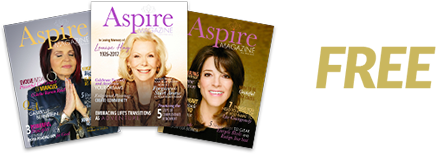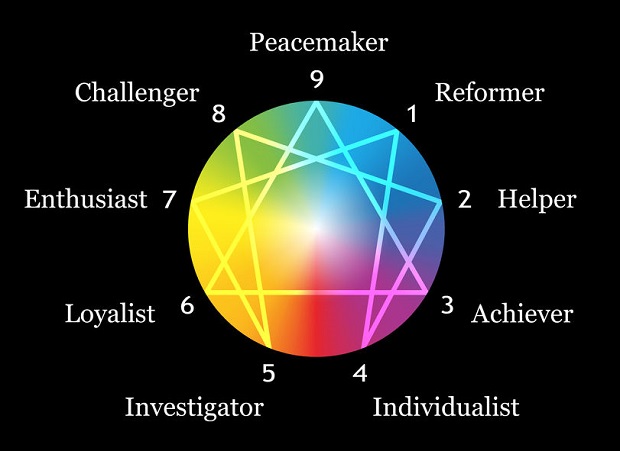The Enneagram, a system for understanding human potential and a powerful tool for transformation, is a synthesis of ancient wisdom and modern psychology and has become more popular in recent years. There are nine personality types arranged around a symbol, which shows the interactions among the types. It is a complex system that is imbued with grace and wisdom.
Understanding our Enneagram personality type can help us to unlock a greater understanding of the depth of who we really are underneath our patterns of behavior. As one of my teachers, Don Riso, often said, “Our Enneagram type is not who we are, it is who we are not”. Our personality represents our false self. There is so much more to us than our personality patterns. This speaks to the transformational potential of the Enneagram, which, if used correctly, can guide us deeper and deeper into an understanding of our true nature. Our personality is like a mask or set of masks that we have accumulated over our lifetime which covers up our true self.
By bringing greater awareness and presence to our personality structures, we can release these masks and wake up to our true self.
One of the key features of the transformational capacity of the Enneagram is the nine levels of development within each type which were first proposed by Don Riso in 1977 and were expanded upon in collaboration with Russ Hudson. These nine levels form a continuum and are categorized into three groups; healthy, average and unhealthy based on how present we are to our reactions and behavior. The more present we are, the less our personality has a hold on us and the healthier we are. Healthy behavior is characterized by freedom from unconscious personality patterns allowing us to live from our essential nature.
At the highest level, the person is liberated from their personality. Nobody lives there 24/7. At Levels 2 and 3, still in the healthy range, the individual is aware of their personality and it is used constructively and in service.
As we move into the average levels of behavior, Levels 4-6, where most of us live, we begin to fall asleep to our true self as the ego or personality has a greater hold. At Level 4, we still have some awareness of our personality but it has a greater hold than at the healthier levels. At Level 5, the Level of Interpersonal Control, there is manipulation of others in order to get psychological needs met. This is where we begin to see reactivity and interpersonal conflicts. At this level, we are fully identified with our ego and that is who we take ourselves to be. This results in us being defensive and exaggerating our ego to keep our perceived identity intact.
As this need to identify with and defend the ego is challenged, anxiety increases and we move further down the levels of health to Level 6, the Level of Overcompensation. People at this level are very difficult to deal with. Behavior becomes more aggressive and disruptive as we fiercely defend our ego agendas. This is the level of conflict. The focus is on getting our ego needs met and not on our impact on others. Anxiety is underlying this need and the ego is in full control of the individual and their behaviors.
Levels 7-9 are highly dysfunctional and even pathological, requiring treatment and intervention by a trained professional.
Understanding our Enneagram type is key to this transformation. As we become more aware of our personality patterns, we become more present to how we react and behave. As we become more present, we move up the levels of health and become freer of our personality/ego.
Moving down the levels of health is governed by being more and more identified with our personality/ego thus it is imperative to our freedom from our personality patterns and our liberation to understand our personality and behavior patterns.
Examples of the path of transformation
Type One
In the healthy range of behavior, Type Ones are defenders of truth and justice, which has earned them the name, the Reformer. Mahatma Ghandi is an example of a healthy Type One. As the personality begins to take more of a hold, Type Ones in the average range of development, have a need for things to be neat, orderly and perfect and they can be harsh critics of themselves and others. Being present to these patterns allows them to move up the levels of health.
Type Two
Type Two, the Helper, is in the heart center where the predominant emotion is shame. At their best, the Type Twos are open hearted, altruistic, generous, compassionate and loving. The challenge for the Type Two is their need for love and attention. This often shows up as “people-pleasing” behaviors such as flattery and being overly generous. Putting the needs of others before their own can lead to resentment. Type Twos in the average levels of health struggle with manipulating others to get their own needs of feeling lovable and worthy met. They can be possessive and prideful. Freedom from their personality patterns comes from trusting that they are lovable and worthy and not having to constantly prove it by their self-sacrificing behavior toward others.
Type Six
Type Six, the Loyalist, is in the middle of the head center, where the predominant emotion is anxiety. Of all of the Head Center Types, the Type Six feels the anxiety most intensely. They often lead by building consensus and dutifully carrying out tasks of their group. They struggle with a lack of trust in the support around them and become suspicious, skeptical and pessimistic. At their best, Type Sixes are grounded and trust their inner guidance. Freedom from their personality patterns comes from letting go of the need to look to others for answers and trusting their own inner authority.
Summary
Knowing our Enneagram type is essential to embracing this path of transformation. As we become more familiar with our unconscious personality patterns, reactivity, and behaviors we begin to bring conscious awareness to what was previously running in the background. As we become more present to our patterns, they began to loosen their grip on our behavior and we expand into a more vast and deep version of ourselves. The Enneagram is a wonderful tool for this path of liberation and is beautifully imbued with grace, wisdom, and compassion.




